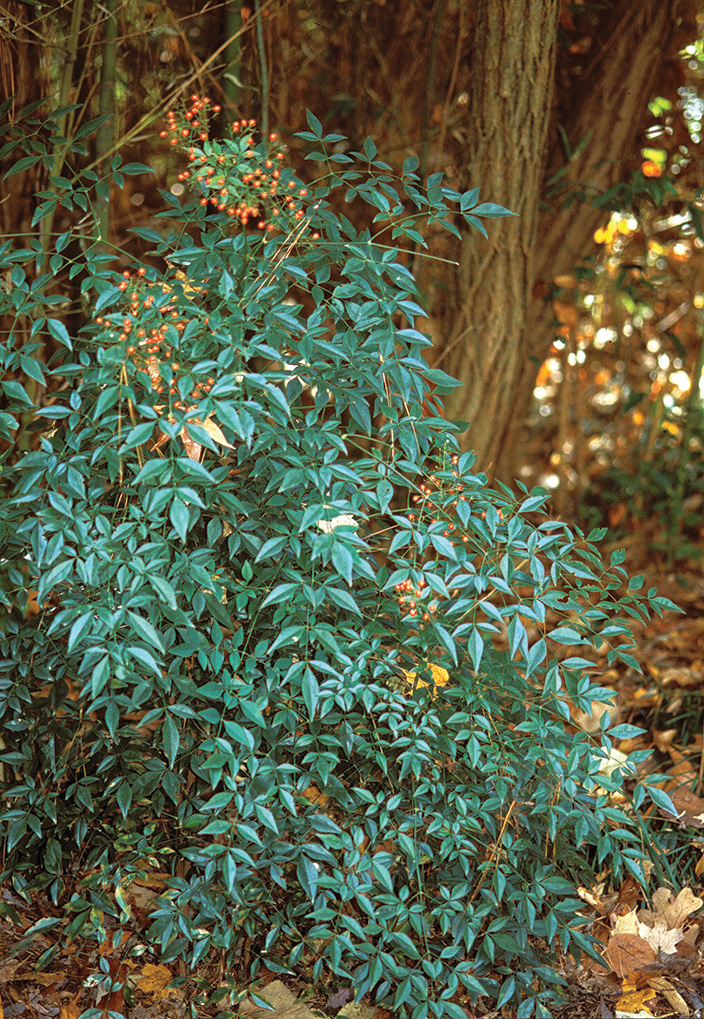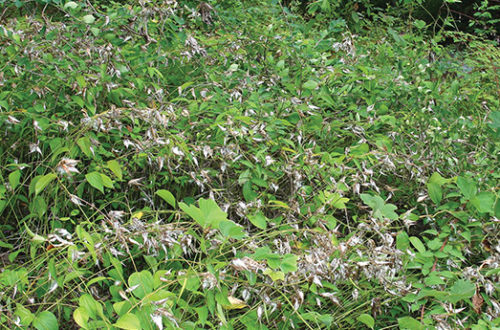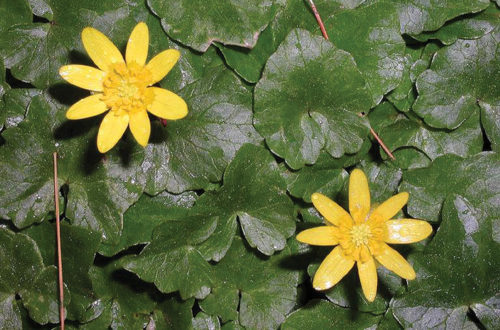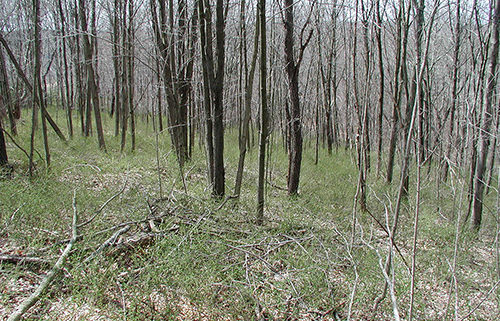MAY-JUNE 2018 – Sacred or Heavenly Bamboo (Nandina domestica) hasn’t been reported in Connecticut … yet. We normally don’t highlight invasives until they’re on the radar of the Connecticut Invasive Plant Working Group (CIPWG – cipwg.uconn.edu) but we’re making an exception for this plant. Keep your eye out and you may be the first to spot it.
It’s better to catch these things early because it increases the chance that new invasives will be found and eradicated before they establish a foothold. People in the invasive field call it EDRR (Early Detection Rapid Response). This is increasingly important as climate change brings us a new suite of invaders.
Not actually a bamboo at all, Nandina domestica comes from Eastern Asia; from the Himalayas and India in the west to Japan in the East. It’s been cultivated as an ornamental in the U.S. since the 1950s.
It arrived in London in 1804 from Canton in the first shipment from William Kerr, a Scottish gardener who worked as a foreman at Kew Gardens before setting out for China.
Kerr is thought to be the first Westerner to collect plants in China as a professional. He has a plant named after him, Kerria japonica, also known as the Japanese Rose.
Unfortunately, N. domestica has escaped cultivation and is now considered invasive in many southeastern states. It has been reported as far north as Virginia, the District of Columbia and Maryland.
It doesn’t help matters that a Connecticut daily reprinted a story that touted the virtues of Nandina with the headline, “Nandinas, the perfect plant for all conditions.”
As is typical of invasive plants, it has taken off in the wild where it outcompetes native plants and negatively impacts biodiversity and local wildlife.
Identification
N. domestica is an evergreen shrub that can reach 8-10 feet in height and 4-6 feet in width. It can be deciduous or semi-evergreen in colder climates. It has multiple unbranched stems and glossy green or reddish leaves. Overlapping sheaths on the main stem look something like bamboo. The stems range from smooth green to woody brown and the wood is yellow.
Young leaves are reddish-bronze before turning green. They’ll turn red or purple again before dropping.
The leaves are bi-or tri-pinnately compound, oddly paired. The odd pairing means there is a single leaflet at the tip of the group that makes the total number of leaflets odd.
Individual leaflets run to 2-4 inches in length. The entire compound leaf, arranged on an extended petiole, can range from 10-20 inches.
Small white-to-cream flowers with yellow anthers appear in early summer on terminal clusters that are 8-15 inches long. They can be pinkish in bud.
Conical clusters of red berries, held above the foliage, ripen in the fall and persist. The two-seeded berries are about 1/3 inch in diameter.
Reproduction
Heavenly bamboo colonizes an area via root sprouts and spreads when its seeds are dispersed by animals. It’s shade tolerant and can escape from old plantings.
Toxicity
All parts of the plant are considered poisonous because they contain compounds that can produce hydrogen cyanide. Though probably not a major concern for humans, in small quantities, the berries are considered toxic to cats and some grazing animals.
Cedar waxwings (Bombycilla cedrorum), in particular, are susceptible as mass death can occur if the birds gorge themselves on the berries when no other food source is available.
Control
Hand-pulling when the soil is moist can be effective but the shrub has a taproot that makes it difficult to remove larger specimens. A tree wrench or shrub/brush removal tool can help. Remove before the plant goes to seed and do not compost.
If digging is unsuccessful, you can cut the stems at ground level and apply a selective herbicide to the cut stem. Make sure to follow the directions on the label … the label is the law.
– Will Rowlands

The tiny white flowers have yellow anthers.

They ripen in the fall and persist.

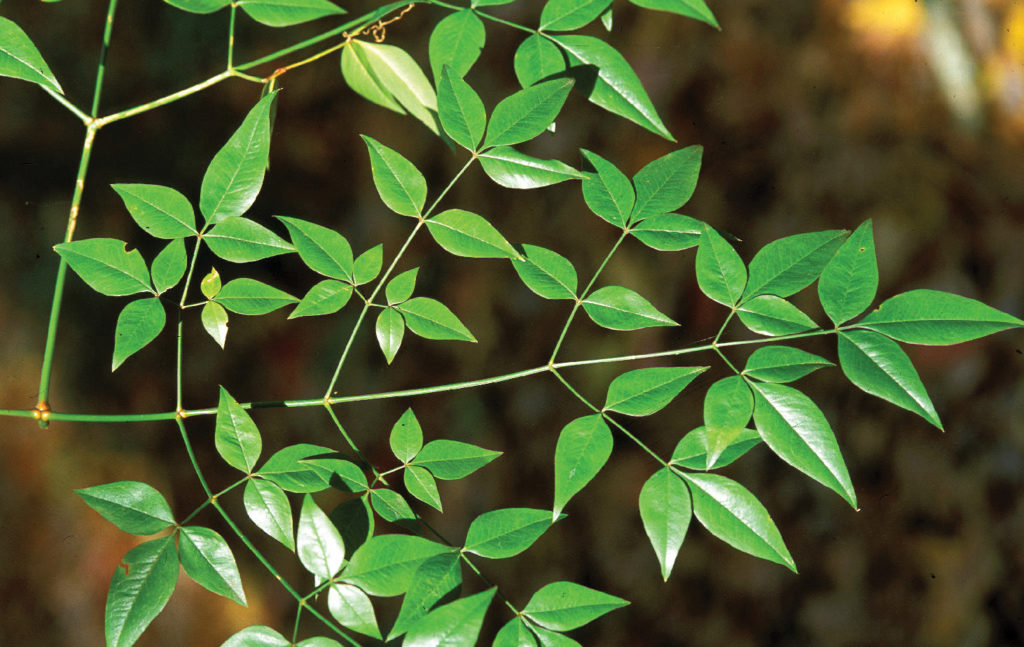
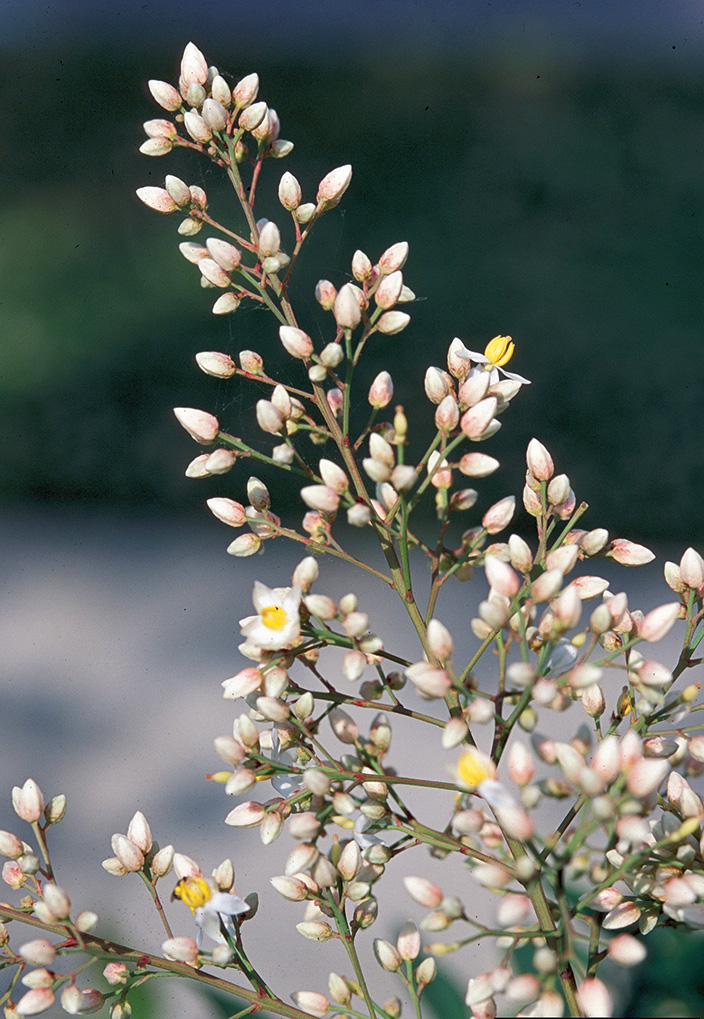
Sources
• A Field Guide for the Identification of Invasive Plants in Southern Forests by James H. Miller, Erwin B. Chambliss & Nancy J. Loewenstein.
• A Management Guide for Invasive Plants in Southern Forests by James H. Miller, Steven T. Manning & Stephen F. Enloe.
• How to Eradicate Invasive Plants by Teri Dunn Chace.
• Invasive Plants – Weeds of the Global Garden by the Brooklyn Botanic Garden.
